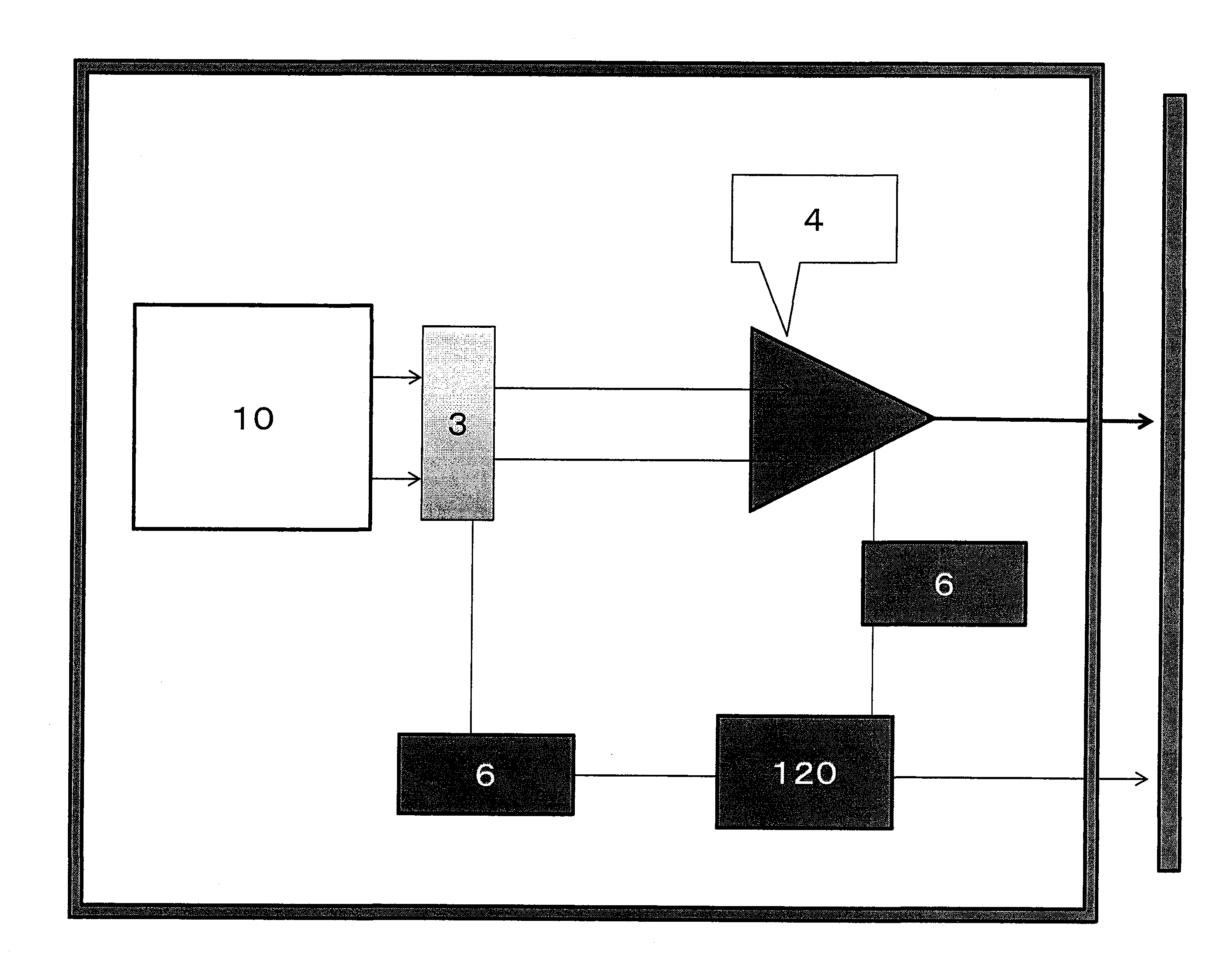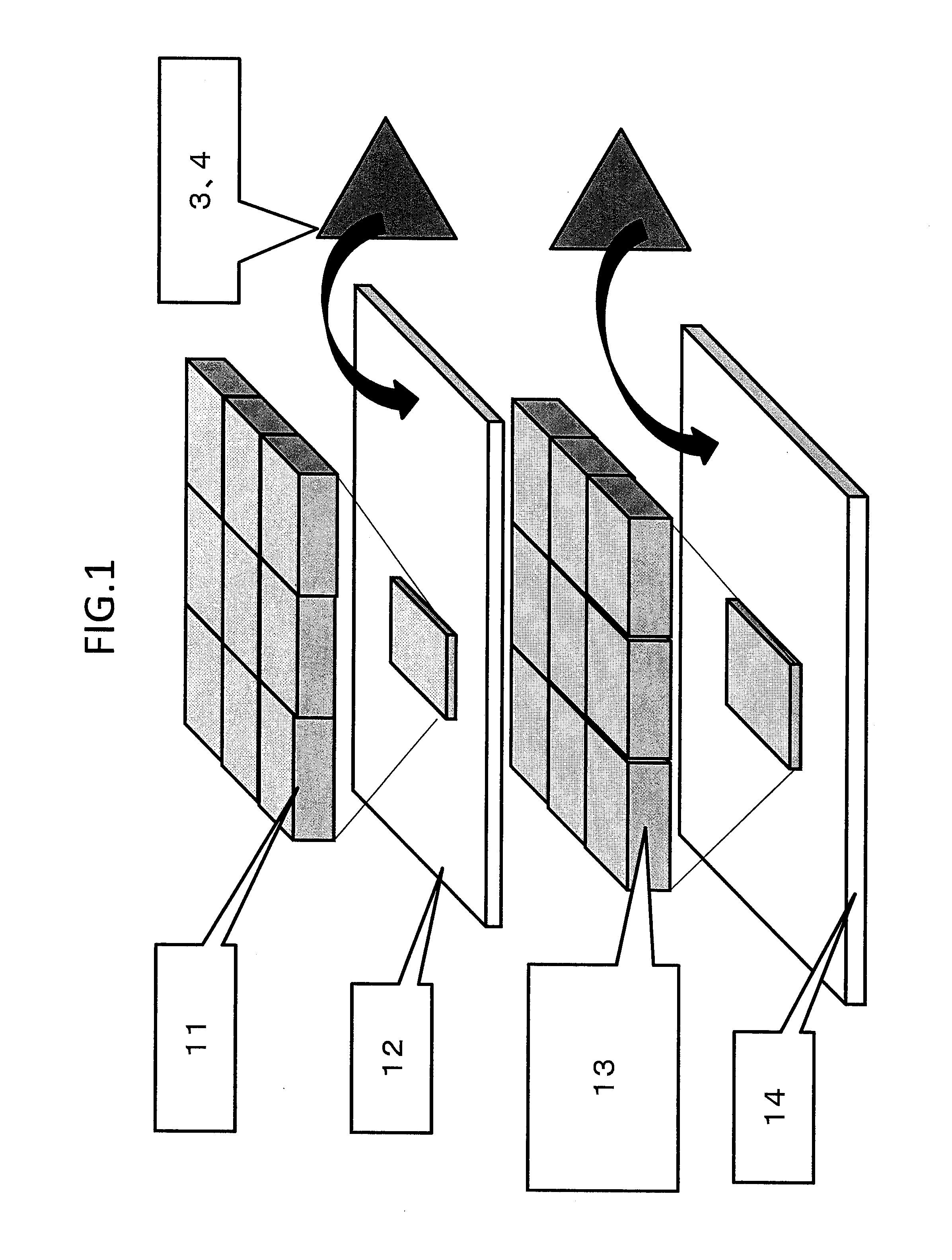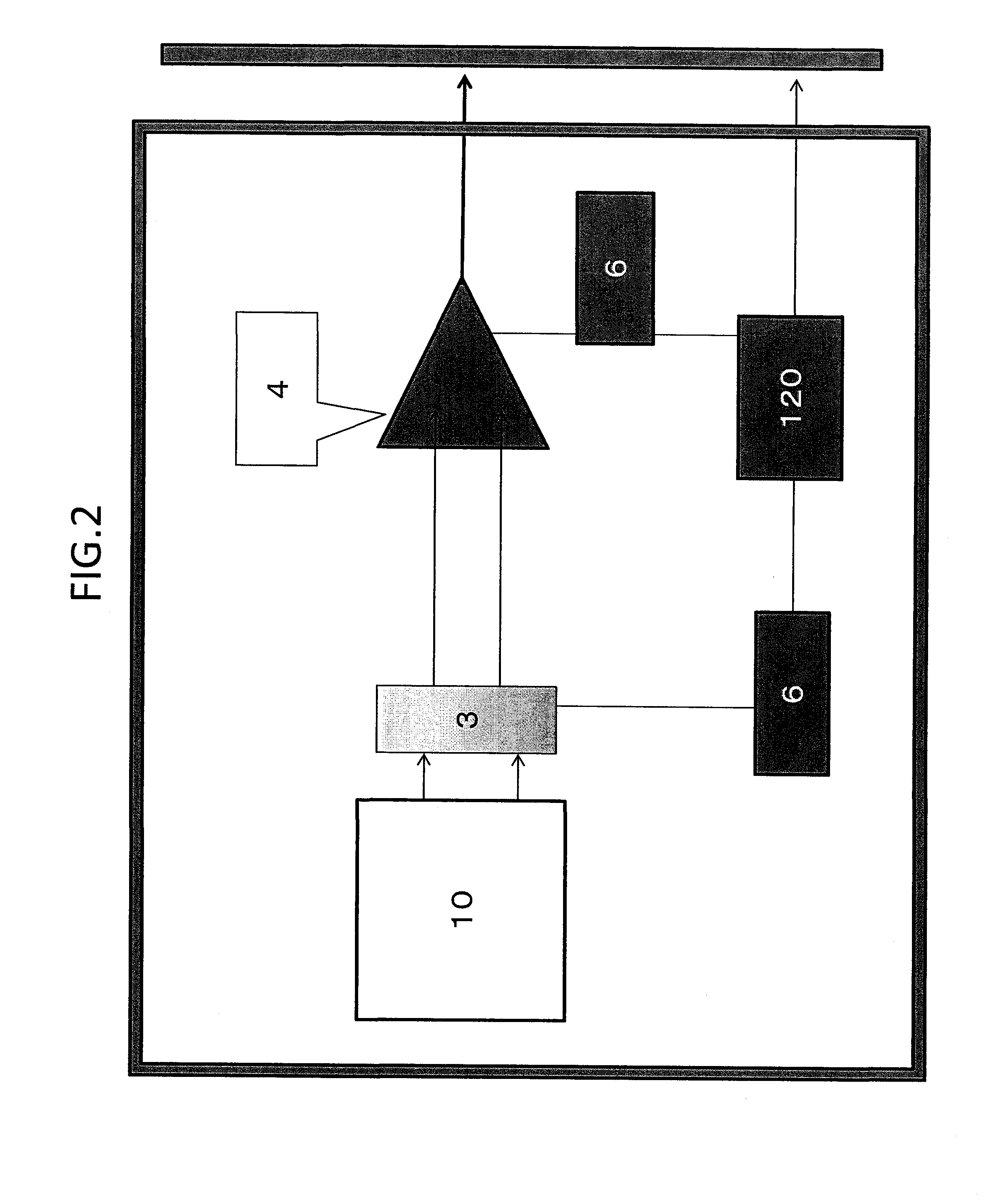Photovoltaic Power Generation System and Photovoltaic Power Generation Device
a photovoltaic power generation and photovoltaic technology, applied in the direction of electric variable regulation, process and machine control, instruments, etc., can solve the problems of reducing the operating current by an amount corresponding and the cell may suffer from a loss of power, so as to reduce the number of components, and reduce the effect of quantum efficiency
- Summary
- Abstract
- Description
- Claims
- Application Information
AI Technical Summary
Benefits of technology
Problems solved by technology
Method used
Image
Examples
embodiment 1
[0065]FIG. 1 illustrates a basic concept of the photovoltaic power generation system according to Embodiment 1 of the present invention. Silicon and germanium, both crystallize in the diamond structure with a lattice constant of 0.543 nm and 0.565 nm, respectively, and that is to say, the silicon and germanium are lattice-mismatched semiconductor materials. Substrates employed for both the silicon and germanium are a single-crystalline direction p-type substrate. The surface layer is doped to be an n-type diffused layer. A silver electrode is formed on a part of the front surface as an n-type electrode, while an aluminum electrode is formed on a part of the back surface as a p-type electrode. A germanium cell 13 is divided into 121 sections (11×11), each of which being connected in series with a transparent insulating substrate 14. Similarly, a silicon cell 11 is divided into 49 sections (7×7), each of which being connected in series with a transparent insulating quartz substrate 1...
embodiment 2
[0078]Silicon and gallium-aluminum arsenide (GaAlAs) have a lattice constant of 0.543 nm and 0.562 to 0.563 nm, respectively, which belong to a group in which an epitaxial growth technique cannot be used because it causes distortion. Table 3 shows the characteristics of cells per unit area and data of modules per 100 cm2.
[0079]As a lower first cell, a silicon cell was used. An upper second cell was made of GaAlAs. The GaAlAs cell and silicon cell were mounted on a transparent insulating substrate such as a quartz, respectively, and stacked. The output of each cell was extracted at a load resistor and a step-up voltage transformer (booster). When light is irradiated at an air mass (AM) of 1.5 and current is maintained constant at 0.027 A, the output voltages of the output circuits are 17.4 V and 16.6 V, respectively. The voltages are combined in series, resulting in 40 V in total. The solar batteries are designed to change the output voltage with changes in illumination.
[0080]It is g...
embodiment 3
[0081]When stacked solar cell modules are manufactured, a terminal box in which a connection terminal unit is installed is attached to every module. The wiring diagram of the connection terminal unit is shown in FIG. 7. An input from the solar cell module is introduced through terminals 1 and terminals 2. The terminals 1 have a higher potential than that of the terminals 2. The terminals 1 and 2 are connected to load resistors 3 and the inputs are fed to step-up voltage transformers (boosters) 4. Outputs from the step-up voltage transformers (boosters) 4 are introduced from back-flow prevention diodes 5 to connecting terminals 8 and 10 where the outputs are combined. The combined output power is extracted from output terminals 100 and 110. A communication IC chip 120 is connected to communication lines. Although there are two inputs in FIG. 7, it is needless to say that the number of the inputs can be increased to three, four or more. FIG. 8 shows a structure of a voltage-controllab...
PUM
 Login to View More
Login to View More Abstract
Description
Claims
Application Information
 Login to View More
Login to View More - R&D
- Intellectual Property
- Life Sciences
- Materials
- Tech Scout
- Unparalleled Data Quality
- Higher Quality Content
- 60% Fewer Hallucinations
Browse by: Latest US Patents, China's latest patents, Technical Efficacy Thesaurus, Application Domain, Technology Topic, Popular Technical Reports.
© 2025 PatSnap. All rights reserved.Legal|Privacy policy|Modern Slavery Act Transparency Statement|Sitemap|About US| Contact US: help@patsnap.com



